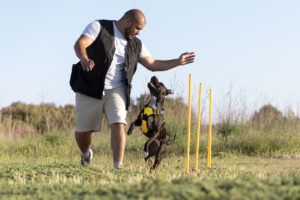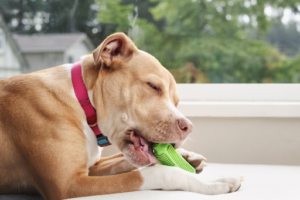Are you seeing parvo symptoms in dogs?
Canine parvovirus is a highly infectious virus that may afflict any dog, but unvaccinated dogs and pups under the age of four months are most vulnerable. If you’re concerned about your dog, the most important thing is to watch out for signs and symptoms of parvovirus.
In this post, that’s exactly what we’ll talk about!
What is Parvo in Dogs?
Canine parvovirus infection causes illness in dogs’ gastrointestinal tracts and is transferred by direct dog-to-dog contact as well as contact with infected feces (stool), surroundings, or people.
When a person who has recently been exposed to an infected dog touches your puppy, or when a puppy comes into contact with a contaminated object, such as a food or water dish, collars, and leashes, or the hands and clothing of persons who handle sick dogs, indirect transmission occurs.
That is why it is critical to always clean your dog’s area and items, including their dog toys and bowls.
Symptoms of Parvo in Dogs
Parvo symptoms can swiftly escalate, and the sickness can be deadly. If your dog exhibits any of the following early indicators of parvo, contact your veterinarian right away:
Vomiting and Diarrhea
If your dog has canine parvovirus, it will vomit and have diarrhea. The vomit may be clear, yellow, or brown, and diarrhea may contain blood and be a light yellow or mustard color.
As part of their parvo symptoms, your puppy may appear to be drooling or foaming at the mouth in addition to vomiting often. Your puppy’s nose may also start to run.
Lethargy
Parvovirus can also cause your dog’s energy to drop, and lethargy can be a sign. If your typically lively and active puppy suddenly seems less engaged than usual, this might be an indication of an underlying health problem.
Fever
Another typical symptom of parvovirus is fever. The body responds to many ailments by raising its internal temperature. Dogs have a higher body temperature than humans, with an average temperature ranging between 99.5 to 102.5F. Thus, anything beyond that range is most certainly a fever.
Dehydration
Water is essential for a dog’s existence, and we’ve all heard the sound of a dog slurping at its water bowl. Dehydration happens when the body does not acquire enough water to a harmful level and loses more than it replenishes.
Septic Shock
Disorientation, a shivering cold, a sudden rise in temperature, heated skin, a rapid pulse, and rapid breathing or panting are all early indicators of septic shock. Urinary output falls.
Anorexia
If you observe a decline in your puppy’s diet or if they don’t appear interested in eating at all, this is always causing concern. Dogs require a lot of nutrition, especially developing pups, and not eating can result in considerable weight loss or anorexia.
Conclusion
Getting a new puppy means lots of play and excitement, but it also requires doing all possible to keep your new best companion safe and healthy. Preventative actions, as well as knowledge of the canine parvovirus’s indications and symptoms, will ensure that you and your pooch have a lot more fun in the future!
For more dog health tips, don’t forget to check out our PetFitness blog!







